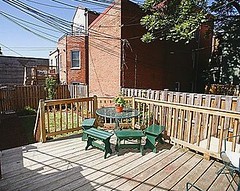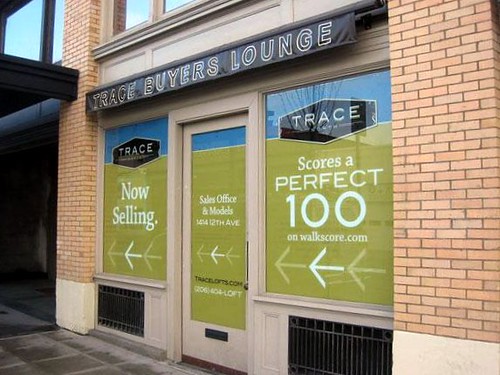Walk Score is helping homebuyers find convenient locations!

Posted August 4, 2009 at 1:37PM
I've reported a couple of times before about Walk Score, the handy-and-getting-handier tool for calculating the convenience of a given location to typical destinations like shops, restaurants, schools, parks, libraries, and so on. The more destinations within walking distance, the higher the score (destinations within ¼ mile are weighted most heavily, those approaching a mile away the least; anything farther than a mile is disregarded).
NRDC's Washington office rates a "walker's paradise" score of 98; my home gets a "very walkable" 80. The proposed school sprawl site in Durham that I blogged about last week? It gets a 3.
It's great fun, and highly useful in generating a rough approximation of how "smart" a location is. But I what I find especially heartening is that Walk Score is now being used by the real estate industry to guide buyers to the kinds of locations that they prefer. Kathleen Burge, writing earlier this year in The Boston Globe, puts it this way:
"Walkability has become a buzzword in real estate, as environmentalists and "green" planners advocate compact residential neighborhoods near businesses and public transportation. And some realtors say in this difficult market, houses with high walkability scores are easier to sell: Owners can save money by walking to mass transit, and by using less gas when running errands."
The people at Walk Score provide helpful tools to real estate firms, including an "API" and a "tile" that, I think, incorporate the Walk Score database into maps that prospective buyers (or renters) can manipulate to see both the locations of neighborhood amenities and the precise locations of the firms' houses for sale.  A number of real estate agencies are now using these tools or other entry points into the Walk Score system and reporting the results for their listings, including such biggies as Zillow and ZipRealty. Zillow's Drew Meyers explains it all on his company's blog. If the firm is using the latest version of the tile, it can even provide Google Maps' street views of the locations and the services and amenities incorporated into each Walk Score.
A number of real estate agencies are now using these tools or other entry points into the Walk Score system and reporting the results for their listings, including such biggies as Zillow and ZipRealty. Zillow's Drew Meyers explains it all on his company's blog. If the firm is using the latest version of the tile, it can even provide Google Maps' street views of the locations and the services and amenities incorporated into each Walk Score.
For example, I followed a link to one of the Zillow listings that popped up on their home page (it's kind of creepy that it automatically showed listings in DC, where I live, but that's the internet) in Washington's Capitol Hill Neighborhood. Scroll down to the "charts and data" part of the page where the property's taxes are listed, and one can learn that it, too, has a splendid Walk Score of 98. One of ZipRealty's listings in Camas, Washington, wasn't so fortunate. By clicking on "neighborhood info," I found a page disclosing a score of only 18. Their site does helpfully tell the user exactly what amenities are nearby. (This was all random on my part, by the way.)
 Even better was the site of the firm Estately, which allowed me to select a city, click on "advanced search," and limit the listings displayed to those within the Walk Score range of my choice. It also allowed me to narrow the search further by specifying a certain proximity to transit service, making up for one of Walk Score's current deficiencies. (Another current shortcoming of Walk Score is that it measures only straight-line distance, without regard to street configuration, sidewalks, or blockages. But it's only going to get better. Go here to see how they are working on the real estate potential of their service.)
Even better was the site of the firm Estately, which allowed me to select a city, click on "advanced search," and limit the listings displayed to those within the Walk Score range of my choice. It also allowed me to narrow the search further by specifying a certain proximity to transit service, making up for one of Walk Score's current deficiencies. (Another current shortcoming of Walk Score is that it measures only straight-line distance, without regard to street configuration, sidewalks, or blockages. But it's only going to get better. Go here to see how they are working on the real estate potential of their service.)
